Ankle Sprain Exercises
Ankle sprains can be quite painful however it is quite important that as soon you can following the injury you try to regain movement in your ankle. It is important to have proper physiotherapy supervision to assist in performing these exercises.
- Days following injury: Initially the stretches can be performed and once these are tolerable and easier with regards to pain and swelling you can move to range of motion exercises.
- Days to weeks following injury and swelling improving: Perform range of movement exercises.
- When able to weight bear comfortably: Balance, strengthening exercises.
Stretches
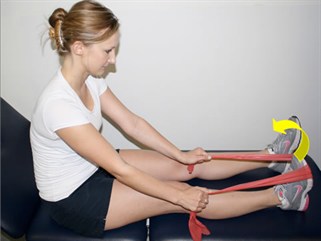
1 Band/towel stretch
- Sit on the floor with your legs stretched out in front.
- Loop a towel/rope/band around the ball of your foot and pull the towel stretching the back of your calf.
- Hold for 30 seconds. Repeat 3 times.
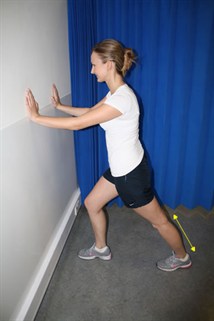
2 Standing calf stretch
- Facing a wall, put your hands against the wall at about eye level. Keep the sore foot back and your good foot forward, and the heel of your injured foot firmly on the floor.
- Turn your injured foot slightly inward (as if you were pigeon-toed) and slowly lean into the wall until you feel a stretch in the back of your calf.
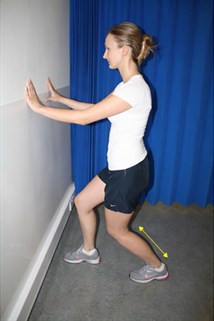
3 Standing Soleus muscle stretch
- Stand facing the wall with your hands on the wall
- Keep your knees a little bent and the sore foot back
- Gently lean your knees in towards the wall to stretch the back of the calf
- Keep your heel on the ground
- Hold for 30 seconds and repeat 3 times
Range of Motion Exercises

4-6 The Alphabet
- You can do this exercise sitting or lying down. Pretend you are writing each of the letters of the alphabet with your foot. This will move your ankle in all directions as shown. Do this 2-3 times.
Resisted Movement
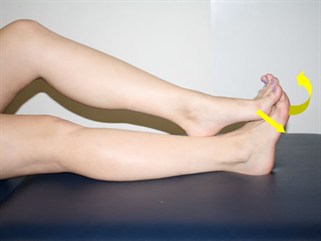
7 Resisted dorsiflexion
- Place your injured foot under your good foot. Put the heel of your good foot on top of the toes of your injured foot. Gently pull your toes and ankle towards your face on the injured ankle and the good foot can provide resistance on top. Hold for 5 seconds. Repeat 10 times. Do 3 sets of 10 exercises.

8 Resisted Plantar flexion
- Place your injured foot on top of your good foot. Push down into the floor and your good foot can provide resistance to the movement. Hold for 5 seconds and repeat 10 times. Do 3 sets of 10 exercises.
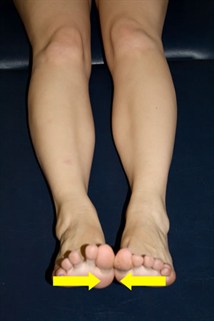
9 Resisted inversion
- Hold your feet together and push them together. The good foot can provide resistance to the movement of the injured foot. Hold for 5 seconds and repeat 10 times. Do 3 sets of 10 exercises.
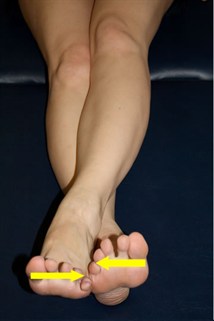
10 Resisted eversion
- Cross your legs over with your ankles crossed. Then push the outsides of your feet together. The good foot will resist the movement of your injured ankle. Hold for 5 seconds and repeat 10 times. Do 3 sets of 10 exercises.
Balance Exercises
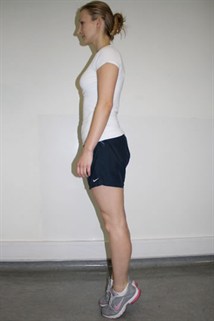
11 Heel raises
- Standing, balance yourself on both feet behind a chair. Rise up on your toes, hold for 5 seconds and then lower yourself down. Repeat 10 times. Do 3 sets of 10. When this becomes easy then you can progress to single heel raise.
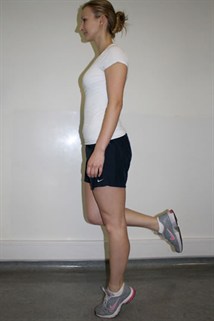
12 Single leg heel raise
- Stand without any support and attempt to balance on your injured leg. Begin with your eyes open and then try to perform the exercise with your eyes closed. Hold the single-leg position for 15 seconds. Repeat 3 times.
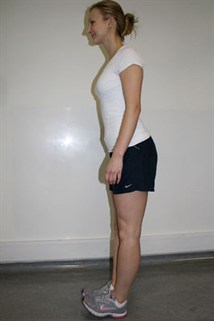
13 Toe raises
- Rock back on your heels so that your toes come lift off the ground. Hold this position for 5 seconds. Repeat 10 times. Do 3 sets of 10.
Strengthening
Skipping
- Jump rope landing on both legs for 10 minutes. Not everyone can do this but it is worth trying if you feel confident in your ability. If things go well then try on only the injured leg for 5 minutes.
Single Leg hopping
- Lift your good leg off the ground. Hop up and down on your injured leg starting off with low hops and build them up. Do 10 hops. Repeat 3 times.
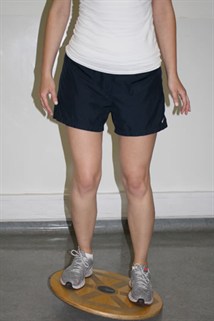
14 Wobble board
- This exercise is important to restore balance and coordination to your ankle. Your physiotherapist can instruct you on their use and will use them in your rehabilitation. Balance first on both legs, then on the injured leg. Do this for 5 minutes 3 times a day. You may need to hold onto a chair or table for balance.














